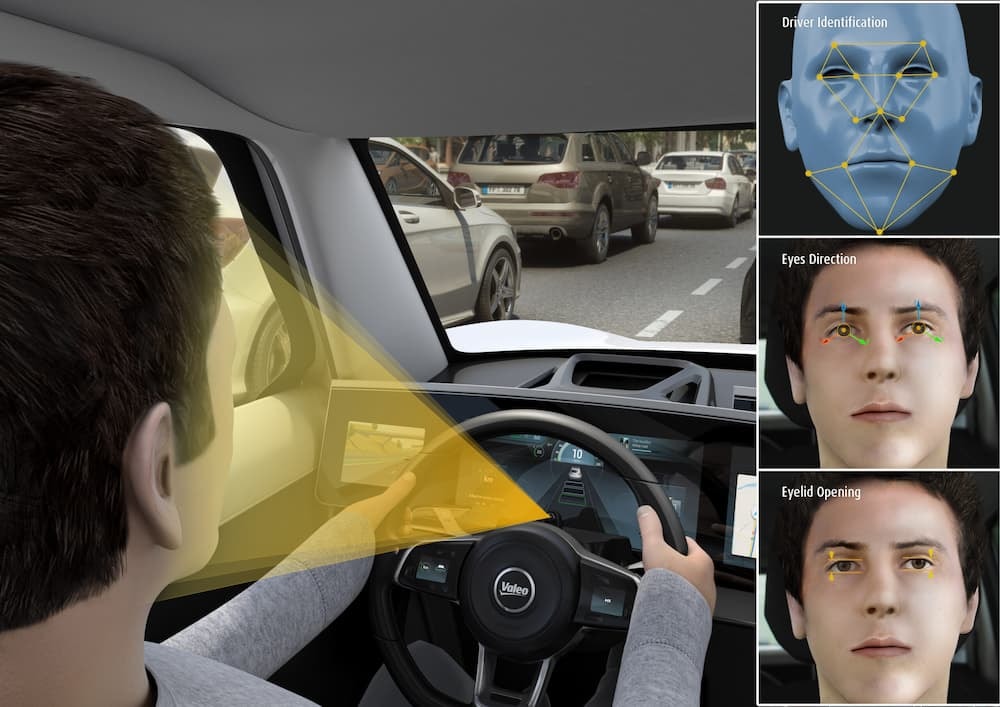Modern cars are equipped with increasingly advanced driver assistance systems designed to increase the safety of all road users. One of these is the driver fatigue detection system, also known as driver attention warning or attention assist. But does this solution actually work? How does a driver fatigue sensor work, and what are its advantages and limitations? Let's take a closer look.
What is a driver fatigue detection system?
Driver Fatigue Detection System is a modern technological solution that monitors driver behavior in real time. Its main task is to detect signs of fatigue, such as head drooping, loss of concentration, or small irregularities in the driving track. After detection of fatigue, the system emits sound signals and/or visual warning on central display, encouraging the driver to take a break.
The system works independently or in conjunction with other security systems, such as lane recognition system, active cruise control Whether vehicle surroundings monitoring systemThanks to this, it can effectively support the driver during long journeys and reduce the risk of accidents.
How does the driver fatigue sensor work?
This is how driver fatigue sensor is working, depends on the manufacturer and model of the vehicle. In most cases monitoring system analyzes steering wheel torque, steering wheel movements, driver reaction time, driving style, and even how you use the gas and brake pedals. This data is processed by advanced algorithms, which compare current behavior with the behavior typical of a well-rested person.

In more advanced vehicles, e.g. Mercedes-Benz, is also used cameras directed at the driver's face, which analyze eyelid movement, head position and her sudden dropSensors and cameras installed in vehicle cockpit can combine data with surroundings and driver behavior to recognize with even greater accuracy signs of fatigue.
When and how does the driver fatigue detection system warn?
Fatigue detection system does not start automatically as soon as the vehicle starts moving. It must first collect data regarding driver's driving style, usually for the first 15-20 minutes. During this time, it analyzes driving track, movements steering wheel, acceleration and braking.
After identifying the first irregularities – such as irregular steering wheel movements, deviation from the lane, delayed reaction to traffic situations – the system may display coffee cup symbol on the screen or generate sound signal, suggesting a break in driving.

In more advanced versions, such as in vehicles with a system driver monitor, the analysis is carried out by cameras and infrared sensorswhich record facial and eye movements. This solution can recognize earlier and more precisely driver fatigue, even before more visible symptoms appear.
Integration with other systems
In modern cars driver fatigue detection system works together with many other systems, which allows for even more effective increased security.For example:
- in combination with lane assistant, the system recognizes deviation from driving track,
- cooperation with active cruise control allows for better monitoring of driving rhythm,
- integration with road sign recognition system allows you to compare driver behavior with regulatory requirements.
Thanks to this integration, fatigue detection system is not only a warning function, but also a real support during everyday use of the car.
What are the benefits of a fatigue detection system?
Advantages driver fatigue sensor there are many. First of all:
- helps stay alert while long routes,
- reduces the risk of accidents caused by loss of concentration,
- encourages taking breaks, which has a positive impact on the health and fitness of the driver,
- is especially useful during night driving or in unfavorable weather conditions,
- cooperates with other security systems, creates a coherent ecosystem of driver and passenger protection.

In practice, this means that even if the driver does not yet experience clear symptoms of fatigue, driver fatigue detection system may signal earlier the need for rest, making driving more enjoyable conscious and responsible.
Disadvantages and limitations of the fatigue detection system
Like any technology, also driver fatigue detection system has its limitations. The most common are:
- misinterpretations of driving style – dynamic driving or frequent lane corrections may be mistaken for signs of fatigue,
- in older models the system works only on the basis of data from steering wheel, which limits its effectiveness,
- influence of external conditions – road works, bad weather, uneven surfaces may cause disruptions in system operation,
- lack of universal standards – each manufacturer has its own algorithms and sensors, which may affect the quality of operation,
- some drivers ignore warnings, disregarding suggestions to take a break,
- the system does not always take into account individual driver preferences or his current well-being.
ZENBOX PRO – more control for the driver
For drivers who want more control over security systems in your vehicle, an interesting solution may be ZENBOX PROThis is an innovative device that allows personalization and adjustment of the operation of support systems.

ZENBOX PRO enables:
- temporary or permanent shutdown driver fatigue detection system without interfering with the factory settings,
- maintaining full control over vehicle behavior,
- avoiding unnecessary warnings, especially in situations where driving style does not correspond to factory patterns,
- support for drivers who drive mainly on short routes and they don't need functions reminding them to take breaks,
- discreet integration into the vehicle system without affecting other functions.
Thanks ZENBOX PRO, the driver can decide for himself when he needs support from electronics and when he prefers to trust own experience and assessment of the situationThis is a modern response to the needs of modern road users who value comfort, But they do not want to give up autonomy when driving.
See also:
- Active vs. Passive Safety – What You Need to Know?
- Start-stop system – operation
- Mandatory passenger car equipment in 2025
- Character recognition system – how does it work?
- ISA System – How the Intelligent Speed Assistant Works
- ADAS system – what is it and how does it work?
- Lane Assist – How it works
- The most important safety systems in cars
